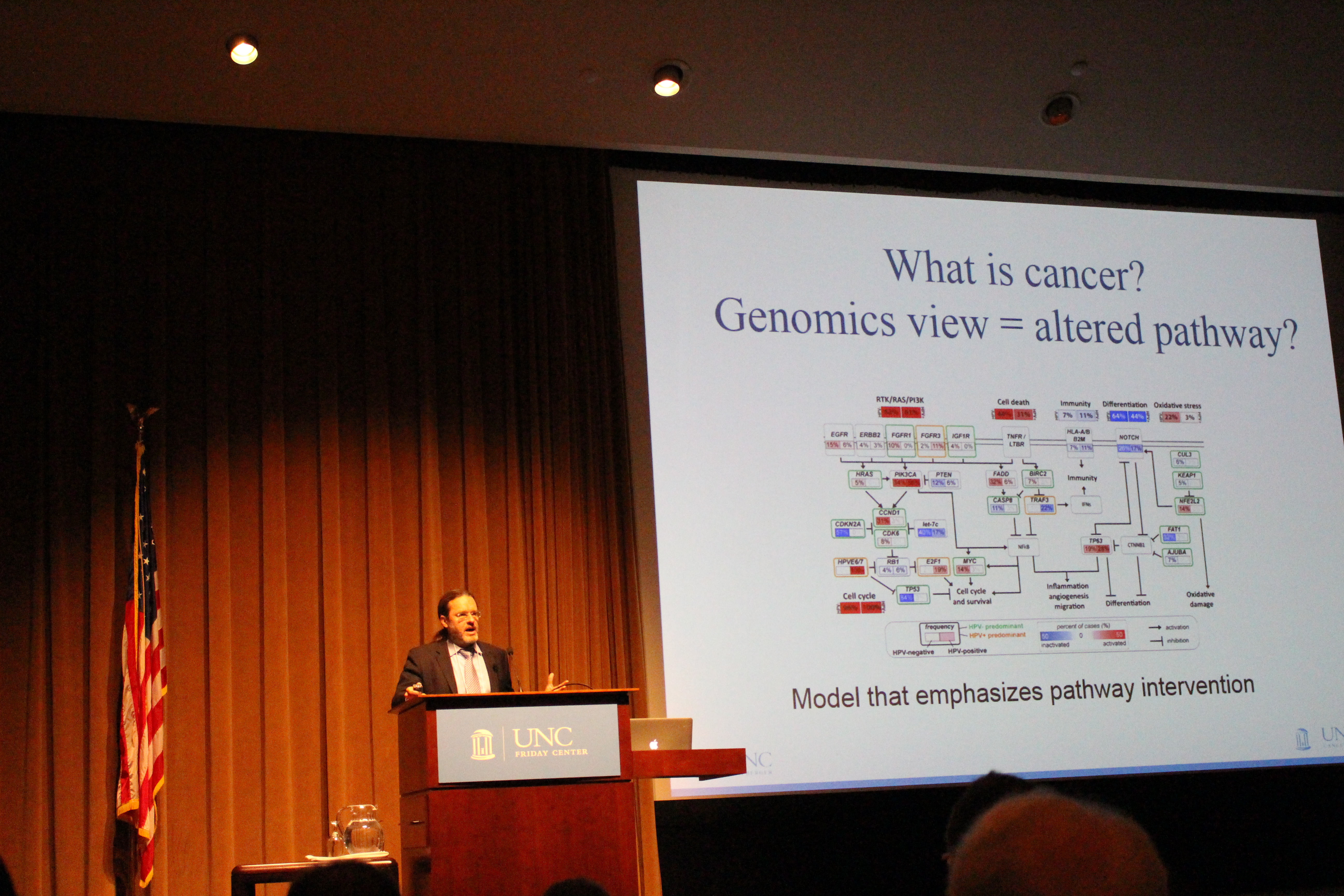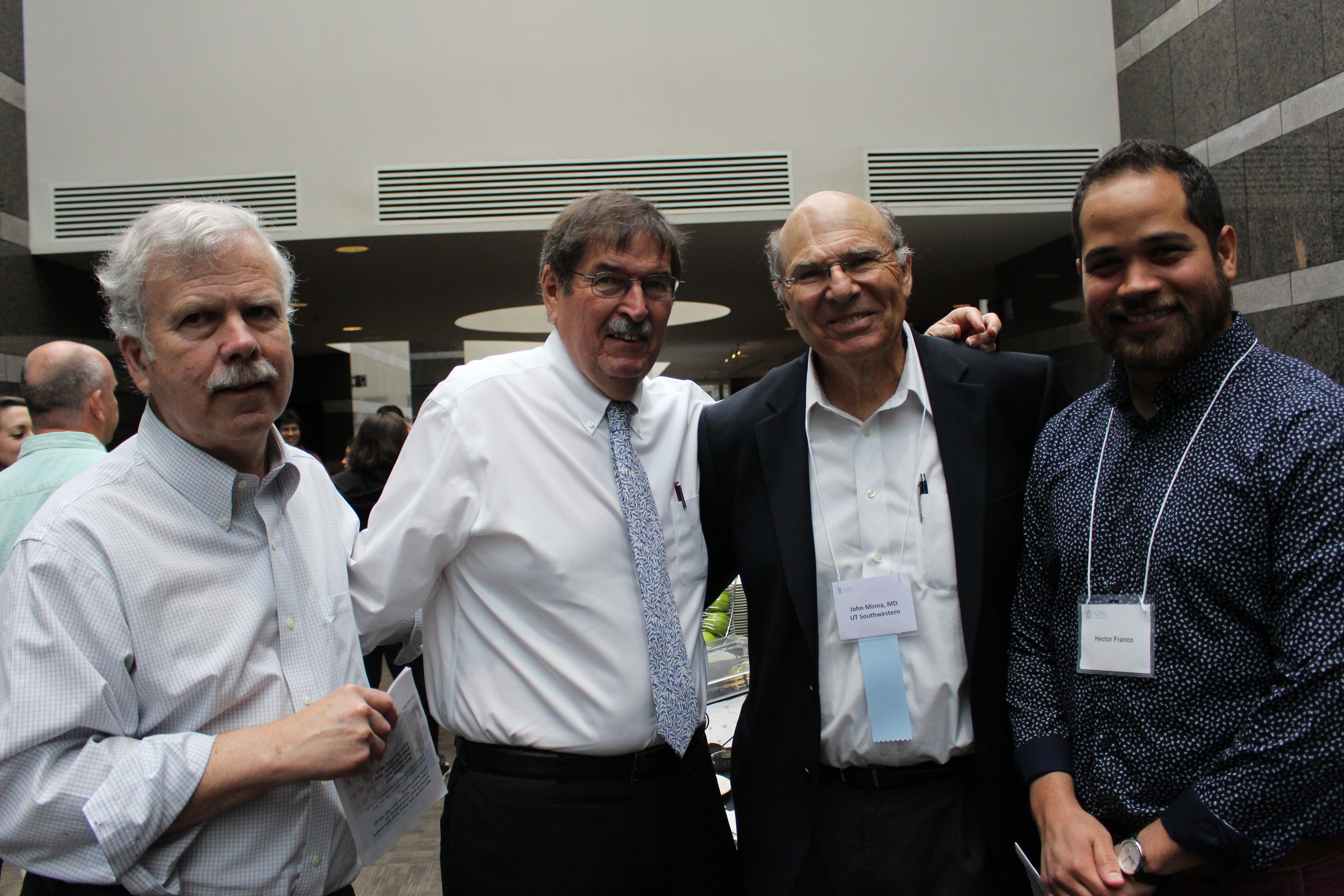Fifteen speakers shared their latest research at UNC Lineberger’s 41st Annual Scientific Symposium, which was held at the William & Ida Friday Center for Continuing Education on the theme of “Developmental Signal Transduction Pathways in Cancer.”


Several hundred scientists from UNC Lineberger Comprehensive Cancer Center joined researchers from institutions from around the country met in Chapel Hill May 22-23 for a two-day scientific symposium that allowed them to form new collaborations and spark new ideas as they tackle some of the most difficult problems in cancer.
Fifteen speakers shared their latest research at UNC Lineberger’s 41st Annual Scientific Symposium, which was held at the William & Ida Friday Center for Continuing Education on the theme of “Developmental Signal Transduction Pathways in Cancer.”
The meeting highlighted new findings about cellular signaling pathways that regulate the progression of cancers, including lung cancer, glioblastoma and pancreatic cancer. The findings both help elucidate the origins of these diseases, and that may help provide insight into new treatments, said meeting co-organizer Al Baldwin, PhD, UNC Lineberger’s associate director of basic research and a Kenan Distinguished Professor.
“I got renewed energy after hearing all of these speakers and experts from around the country,” said symposium co-organizer Ben Major, PhD, UNC Lineberger member and associate professor in the UNC School of Medicine Department of Cell Biology and Physiology. “New collaborations have already happened for me since this meeting, and others happening right now over coffee. People start working together when they meet each other, and generate new ideas.”
Meeting highlights included:
Chad Pecot, MD, UNC Lineberger member and an assistant professor in the UNC School of Medicine Division of Hematology & Oncology, shared research into the biology of metastasis — which Pecot said is the major cause of cancer-related deaths.
While new treatments have led to improvements in survival for some types of lung cancer, that hasn’t been the case for lung squamous cell carcinoma, which accounts for about 35 percent of lung cancers. In order to study this problem, Pecot’s lab created new models of the metastatic version of this disease, since none existed. Through their subsequent studies of these models, they identified a particular pathway that they believe is playing a major role in helping this disease to spread in the body. They found that a particular gene is highly active in metastatic lung squamous cell carcinoma that codes for CCL2, an inflammatory protein that plays a role in recruiting immune cells to the site of disease.
They also identified key pathways upstream that regulate this process, and are working to deactivate it downstream using an investigational inhibitor developed at UNC that targets the immune cells that CCL2 recruits.
Pecot said the symposium offered opportunities to collaborate with other researchers and exposed exciting and new approaches that some researchers are taking to study some of the most difficult-to-treat cancers.
“I felt very honored to be asked to present, especially since it was amongst many of the field’s top cancer biologists,” he said.
Jennifer Webster-Cyriaque, PhD, DDS, a UNC Lineberger member and professor in the UNC School of Medicine and UNC School of Dentistry, presented findings from her studies into the role that “bad” bacteria in the mouth can play in helping cancer-causing viruses to drive oral cancer.
These “bad” bacteria can aid cancer-causing viruses like Epstein-Barr virus and human papilloma virus, or HPV by producing byproducts that promote viral gene expression and disease. Her work points to the role that good dental hygiene may play in cancer prevention.
“I’m a dentist,” she said. “I think we have a real opportunity here. The oral microbiome is the easiest to manipulate and to modulate disease outcomes.”
Neil Hayes, MD, MPH, UNC Lineberger’s associate director for clinical research and an associate professor in the UNC School of Medicine, was a co-organizer of the meeting, as well as a speaker. He emphasized that the next stage of cancer research will involve taking findings from The Cancer Genome Atlas Project — a national effort to map the genetic changes in cancer — and incorporating them into the context of what’s known about normal cellular signaling pathways. Scientists must use that information along with new findings into how cells develop normally to find new therapies.
“Now that we’re in the post Cancer Genome Atlas era, we need to use all of that knowledge about cancer genomics to think about new therapies, strategies, in the context of cancer pathways,” Hayes said. “Researchers and patients have to demand more from our diagnostic team – both industry partners as well as our pharma partners, as well as our clinical partners. We need to go beyond what we’ve done.”
Many of the findings from the symposium dealt with using what’s now known about cancer genetics to create new, and more accurate models of cancer to improve research, and ultimately, improve treatment, Hayes also said.
He added that thinking about cancer mutations in light of the normal pathway, functioning and development of the cell is a new way to think about cancer.
